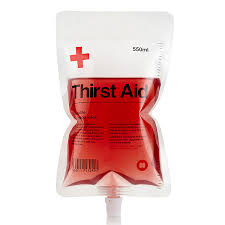As reported By Katherine Kallergis – MiamiHerald.com
“Today is my second birthday,” said George Schwartz, 70.
Schwartz was celebrating after undergoing an adult blood stem cell transplant at the University of Miami’s Sylvester Comprehensive Cancer Center about 10 days ago. Schwartz had been diagnosed with multiple myeloma, a cancer that targets the blood cells in the bone marrow, about a year and a half ago.
Adult blood stem cell transplants allow for healthy blood cell production after a patient receives high doses of chemotherapy.
“I got a second chance of life back,” Schwartz said, hours after his transplant. He was the 200th patient to receive a transplant in the 2-year-old inpatient unit.
The Adult Stem Cell Transplant Program at Sylvester treats people with acute and chronic leukemia and multiple myeloma, cancers of the blood. In multiple myeloma, abnormal plasma cells called myeloma cells multiply in the bone marrow. When the cancerous cells multiply, the result is fewer healthy blood cells: red blood cells, white blood cells and platelets.
Dr. Krishna Komanduri, director of UM’s Adult Stem Cell Transplant program, has directed the program, established in 1992, since 2008. Before that, he spent nearly a decade at M.D. Anderson Cancer Center in Houston.
At Sylvester, Komanduri works to find novel therapies and transplants.
“Blood stem cell transplants are the preferred therapy,” he said, stressing the program does not work with embryonic stem cells, but adult stem cells.
Adult blood stem cells are coaxed out of a patient’s or donor’s bone marrow into the bloodstream with medication, and then are removed. Once the stem cells have been removed from the body, the patient can receive high doses of chemotherapy, without destroying the stem cells.
After the chemo has worn off, the stem cells are transfused back into the patient through an IV, which allows the bone marrow’s blood cell production to recover more quickly.
There are two types of transplants: Allogeneic transplants use donor cells, while autologous transplants use the patient’s own cells.
Positive outcomes for donor transplants have increased significantly, Komanduri said. One-year survival rates for the most common leukemia treated with allogeneic, or donor, transplants are now more than 70 percent. Deaths in these circumstances have dropped from more than 30 percent to around 10 percent.
That statistic doesn’t take into account older patients who would have been excluded in the past, such as Schwartz. Today, they’re being treated and surviving.
In addition, the risk of dying after an autologous transplant like the one Schwartz received has dropped from 5 to 10 percent to around 1 percent, Komanduri said.
Komanduri’s research focuses on T cells, a type of white blood cell that coordinates an immune response. He focuses on how the T cells function in healthy individuals and in stem cell transplant recipients. He’s particularly interested in why the transplanted donor cells can sometimes attack the recipient’s body.
Idania Diaz, who was the program’s 100th patient, received her transplant nine months ago.
Diaz, 60, was diagnosed with multiple myeloma around January 2012 and was treated at the inpatient unit in October 2012. She said she was devastated when she was diagnosed, but Komanduri explained everything to her.
“He told me the good, the bad and the ugly,” Diaz said. “But I had to decide whether I was going to do the transplant.”
Diaz, a third-grade teacher at Fienberg-Fisher K-8 Center in Miami Beach, was in the hospital for two weeks after the transplant and then confined to her home for a couple of months to reduce the chance of infection.
She was able to return to work this April.
“To be able to leave your job and come back as if you’d never left is great,” she said. “I’m back to my normal, healthy lifestyle. I’m happy.”







